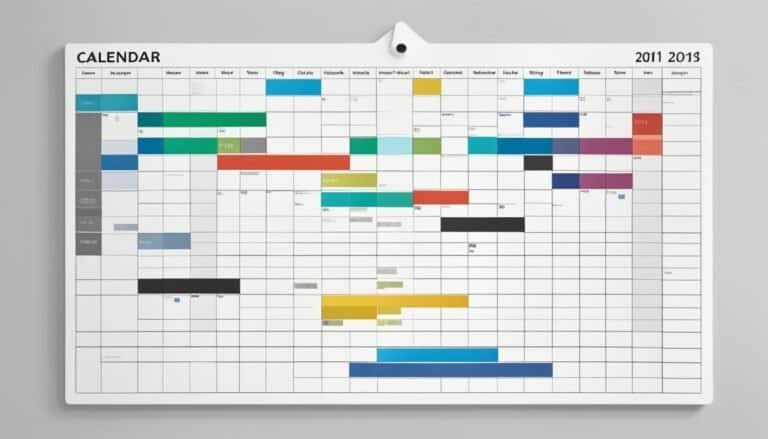Personal Development through Sustainable Lifestyle Choices
|
Getting your Trinity Audio player ready...
|
Sustainability is not just about being environmentally responsible; it is also an essential aspect of personal development. When you align your goals, actions, and values with the principles of sustainability, you can enhance your well-being, resilience, and impact on the world. In this article, we will explore how integrating sustainability into your personal growth plan can contribute to your personal and professional success.
Key Takeaways:
- By adopting a sustainable mindset, you can improve your quality of life and contribute to positive change.
- Including sustainability in your personal growth plan helps clarify your purpose and vision.
- Sustainability encourages ethical values and promotes finding innovative solutions to problems.
- Assessing your current level of sustainability is crucial before setting sustainable goals.
- Maintain and improve sustainability by developing habits and routines that support your goals.
What is Sustainability?
Sustainability is the ability to meet the needs of the present without compromising the ability of future generations to meet their own needs. It is a multifaceted concept that involves balancing the environmental, social, and economic aspects of human activity. By embracing sustainability, individuals can make intentional choices that contribute to a more environmentally responsible and socially just world.
Environmental responsibility is a key aspect of sustainability. It involves minimizing the negative impact of human activities on the natural environment and preserving Earth’s valuable resources for future generations. This can be achieved through practices such as reducing waste, conserving energy and water, and protecting biodiversity.
However, sustainability goes beyond just environmental responsibility. It also encompasses social and economic dimensions. Social sustainability focuses on meeting the needs and improving the well-being of all people, regardless of their background or circumstances. Economic sustainability involves creating systems that support long-term economic growth while ensuring equitable distribution of resources.
Adopting a sustainable mindset not only benefits the planet but also promotes personal development. By aligning your actions with sustainability principles, you can improve your quality of life, enhance your sense of purpose, and contribute to positive change. Embracing sustainability in your personal growth plan allows you to create a meaningful impact on both yourself and the world around you.
“Sustainability is no longer just a buzzword or a trend, but a necessity for a better future. It’s about making choices that consider the long-term consequences of our actions and prioritize the well-being of people and the planet.”
Why include sustainability in your personal growth plan?
Incorporating sustainability into your personal growth plan can have a profound impact on your journey towards personal and professional success. By embracing sustainability principles, you can enhance various aspects of your life and contribute to creating a more sustainable world.
When you integrate sustainability into your personal growth plan, it enables you to:
- Clarify your purpose and vision: Sustainability encourages you to reflect on your values and align your actions with a greater sense of purpose. By considering the long-term implications of your choices, you can envision a future that is both personally fulfilling and environmentally responsible.
- Develop your character and integrity: Sustainability challenges you to make ethical decisions that consider the well-being of the planet and future generations. By prioritizing sustainable practices, you can cultivate strong character traits such as responsibility, compassion, and integrity.
- Boost your creativity and innovation: Embracing sustainability requires finding innovative solutions to complex environmental challenges. This mindset nurtures your creativity and encourages you to think outside the box, fostering a mindset of continuous learning and growth.
- Strengthen your resilience and adaptability: Sustainability is about embracing complexity, diversity, and uncertainty. By integrating sustainable practices into your personal growth plan, you develop the ability to adapt to changing circumstances and navigate challenges with resilience.
- Expand your network and influence: Sustainability is a global movement that brings together individuals, communities, and organizations committed to creating positive change. By engaging with sustainability initiatives, you can expand your network, collaborate with like-minded individuals, and increase your influence.
Moreover, including sustainability in your personal growth plan can enhance your overall skills, knowledge, performance, and happiness. It encourages you to prioritize lifelong learning, develop critical thinking skills, and adopt sustainable practices that contribute to your personal and professional growth.
By embracing sustainability, you are not only making a positive impact on the world but also unlocking your potential for personal and professional success.
How to Assess Your Current Level of Sustainability?
Before embarking on your personal growth journey with sustainability, it’s important to assess your current level of sustainability. This evaluation will help you understand how your lifestyle, habits, and choices impact the environment, society, and economy, and whether they align with your values and goals.
Take the time to reflect on your daily routines, consumption patterns, and overall lifestyle. Consider the following questions:
- How do your daily habits contribute to or detract from sustainability?
- What choices do you make in terms of food, transportation, and energy consumption?
- Do your values align with your actions?
Assessing your sustainability can be done using various tools and techniques. One widely-used tool is the Ecological Footprint, which measures your resource consumption and waste generation. It provides valuable insights into your environmental impact and can guide you toward more sustainable practices.
| Aspect of Sustainability | Assessment Questions |
|---|---|
| Environmental Impact | Do you minimize waste, recycle, and conserve resources? |
| Social Impact | Do your choices support fair labor practices and social justice? |
| Economic Impact | Do you support local businesses and ethical practices? |
| Personal Satisfaction | Do your choices align with your personal values and goals? |
| Social Well-being | Do you contribute positively to your community and the well-being of others? |
Additionally, evaluate your overall well-being and personal satisfaction. Consider the impact of your daily choices on your mental, emotional, and physical health. Sustainability should enhance your overall quality of life.
By assessing your current level of sustainability, you can identify areas for improvement and set meaningful goals for your personal growth plan.
“The first step towards change is awareness. The second step is acceptance.” – Nathaniel Brandon
How to Set Sustainable Goals and Actions?
Once you have assessed your current level of sustainability, it’s time to set sustainable goals and actions as part of your personal growth plan. By aligning your goals and actions with the principles of sustainability, you can make a positive impact on both yourself and the world around you.
Make SMART Goals: When setting sustainable goals, ensure that they are Specific, Measurable, Achievable, Relevant, and Time-bound. This framework will help you create goals that are focused and attainable.
SUSTAINABLE Actions: In addition to SMART goals, it’s important to consider the SUSTAINABLE framework. Make sure your actions are Supportive, Useful, Satisfying, Transformative, Accountable, Innovative, Nurturing, and Ethical. This holistic approach ensures that your actions are not only environmentally friendly but also aligned with your values and bring fulfillment.
Identify your strengths and passions, and align your goals with them. This will give you a sense of purpose and motivation throughout your personal growth journey. Prioritize your goals based on their impact on the environment, society, and economy.
Tracking your progress is essential for measuring success. Regularly reflect on your actions and results to evaluate how effectively you are aligning with sustainable practices. This self-reflection will help you make adjustments and stay on track.
Create a Table Below to Visualize Your Sustainable Goals:
| Category | Sustainable Goal | Action Plan | Timeline |
|---|---|---|---|
| Environment | Reduce plastic waste | Use reusable bags, bottles, and utensils | Within 3 months |
| Society | Support local businesses | Shop at local farmers’ markets and stores | Ongoing |
| Economy | Invest in sustainable companies | Research and invest in green stocks | Within 6 months |
Use this table to organize and visualize your sustainable goals. Tailor it to your personal circumstances and remember to regularly update and adjust your goals as you progress on your sustainability journey.
How to maintain and improve your sustainability?
Setting sustainable goals and actions is an important step in your personal growth plan. However, it is equally crucial to develop habits, routines, and systems that support and maintain your sustainability over time. By incorporating sustainable practices into your daily life, you can make a lasting positive impact on the environment and create a more sustainable future.
Here are some tips to help you maintain and improve your sustainability:
1. Continuously learn and grow
Stay informed about sustainability issues, advancements, and best practices. Attend workshops, webinars, or conferences related to sustainability. Read books and articles by experts in the field. Embrace a growth mindset and seek opportunities to expand your knowledge and skills.
2. Apply the knowledge you gain
Take action on what you learn. Apply sustainable practices in your everyday life, such as conserving energy and water, reducing waste, and practicing mindful consumption. Small changes in your habits and routines can make a big difference in the long run.
3. Reflect and evaluate
Regularly reflect on your thoughts and actions to evaluate their alignment with sustainability principles. Consider the impact of your choices on the environment, society, and economy. Identify areas where you can improve and make adjustments accordingly.
4. Be flexible and proactive
Adapt to new opportunities and challenges by staying open-minded and flexible. Embrace change and be proactive in finding innovative solutions to sustainability issues. Take initiative in your personal and professional life to promote sustainability and inspire others to do the same.
5. Regularly review and update your personal growth plan
Your personal growth plan should evolve alongside your values and goals. Regularly review and update it to ensure it reflects your changing perspectives and aspirations. Incorporate new sustainability practices and adjust your strategies to maintain your commitment to sustainability.
“Sustainability is best practiced as a series of small, incremental steps rather than a one-time achievement. It requires ongoing effort and a willingness to adapt.” – Jane Goodall
By integrating these habits and routines into your daily life, you can maintain and improve your sustainability. Remember, sustainability is not just a goal, it’s a lifelong commitment to make a positive impact on the planet.
Think twice before shopping
Every product we purchase has an environmental footprint. Before buying, ask yourself if you really need it. Consider buying secondhand instead of new, look for products made from lower-impact materials with minimal packaging and shipping. Reduce waste and help the planet.
By engaging in sustainable shopping practices, you can reduce your environmental footprint and contribute to the preservation of the planet for future generations. Opting for secondhand shopping is an excellent way to minimize waste and conserve resources. When you buy secondhand, you extend the lifespan of products and prevent them from ending up in landfills. Plus, it’s a budget-friendly alternative that allows you to discover unique and vintage items.
In addition to secondhand shopping, consider supporting brands that prioritize sustainability and use eco-friendly materials. Look for products made from recycled or upcycled materials, organic fabrics, or sustainably harvested resources. These choices not only reduce waste but also support responsible sourcing and manufacturing practices.
“The greatest threat to our planet is the belief that someone else will save it.” -Robert Swan
When purchasing products, think about the entire lifecycle of the item. Consider the energy, water, and resources used during production, as well as the waste generated and the item’s potential for recycling. Choose products with minimal packaging and opt for those with recyclable or biodegradable materials.
Benefits of sustainable shopping
- Reduces waste: Secondhand shopping and choosing sustainable brands help divert products from the landfill, reducing environmental impact.
- Conserves resources: By opting for pre-owned items or products made from recycled materials, you contribute to the conservation of valuable resources like water, energy, and raw materials.
- Supports ethical practices: Sustainable brands often prioritize fair trade, ethical sourcing, and worker rights, ensuring you are supporting responsible and humane practices.
- Encourages circular economy: When you buy secondhand or support brands that promote recycling and upcycling, you contribute to the development of a circular economy, where resources are kept in use for as long as possible.
- Reduces carbon footprint: The production and transportation of new products contribute to greenhouse gas emissions. By choosing sustainable options, you help reduce your carbon footprint.
Next time you’re considering a purchase, think twice before shopping. Ask yourself if you truly need the item, explore secondhand options, and support sustainable brands. Your choices can make a difference in reducing environmental impact and building a more sustainable future.
Ditch plastic and switch to reuse
Plastic waste is a significant contributor to environmental pollution, posing a serious threat to our planet. By reducing plastic consumption and embracing reusable products, we can make a positive impact on the environment and create a sustainable future.
One effective way to reduce plastic waste is by using reusable bags when shopping. By bringing your own bags when you go grocery shopping or running errands, you can eliminate the need for single-use plastic bags. Not only are reusable bags durable and convenient, but they also help save countless plastic bags from ending up in landfills or polluting our oceans.
Avoiding single-use plastic water bottles, bags, and straws is another simple yet powerful step towards reducing plastic waste. Opt for a reusable water bottle instead of relying on disposable ones. Additionally, choose products that are made from alternative materials or packaged in eco-friendly alternatives to plastic. By making sustainable choices, you can minimize your contribution to the plastic waste crisis.
Embracing the use of reusable products not only benefits the environment but also promotes a more sustainable lifestyle. By making conscious decisions and incorporating reusable alternatives into our daily routines, we can drastically reduce plastic consumption and make a positive difference.
Choose Organic and Avoid Fast Fashion
When it comes to making sustainable choices for your wardrobe, opting for organic products and avoiding fast fashion can have a significant impact on the environment. By choosing organic clothing, you reduce the use of harmful pesticides, protect wildlife, and contribute to a healthier planet.
Fast fashion, on the other hand, is known for its destructive environmental consequences. The rapid production and consumption of low-quality garments contribute to pollution, resource depletion, and exploitation of workers. By avoiding fast fashion, you are taking a stand against these destructive practices.
But how can you make more sustainable choices when it comes to your clothes? Here are some simple steps you can take:
- Care for Your Clothes: Extend the life of your garments by caring for them properly. Follow the care instructions, wash them only when necessary, and avoid using harsh chemicals that can harm the environment.
- Repair When Possible: Instead of discarding clothes at the first sign of wear and tear, consider repairing them. Learn basic sewing skills or take your clothes to a tailor to give them a new lease of life.
- Shop Secondhand: Explore thrift stores, consignment shops, or online platforms that offer secondhand clothing. Buying secondhand not only reduces the demand for new products but also gives pre-loved items a second chance.
- Choose Sustainable Materials: Look for clothing made from sustainable materials such as organic cotton or Tencel. These materials are produced using fewer resources and are often biodegradable, reducing their impact on the environment.
By choosing organic products and avoiding fast fashion, you are contributing to a more sustainable and ethical fashion industry. Your choices matter, and together, we can create a fashion industry that values people, the planet, and quality over quantity.
Next, let’s explore how you can make a difference in your daily water consumption and turn your home into a green oasis.
Be water wise and green your home
Conserving water and making your home more sustainable are essential steps towards creating a more eco-friendly lifestyle. By adopting simple practices and making conscious choices, you can contribute to water conservation, improve energy efficiency, and create a sustainable home environment.
Conserve water with mindful habits
- Take shorter showers to reduce water consumption.
- Fix any leaks promptly to prevent unnecessary water wastage.
- Choose low-flow fixtures and appliances that use water more efficiently.
Xeriscape your yard for water efficiency
Consider xeriscaping your yard by using native plants, rocks, and mulch to create a beautiful and water-efficient landscape. This technique reduces the need for excessive watering and helps conserve water resources.
Harness solar energy for reduced consumption
Installing rooftop solar panels is a great way to reduce both water and energy consumption. By harnessing solar energy, you can generate clean and sustainable power for your home while reducing your reliance on traditional energy sources.
Create an energy-efficient home
- Improve insulation to prevent energy loss and maintain a comfortable indoor temperature.
- Opt for energy-saving windows that provide better insulation and reduce heat transfer.
- Install programmable thermostats to better regulate energy usage and optimize comfort.
- Replace traditional light bulbs with energy-saving alternatives like LED bulbs.
By implementing these water conservation and energy efficiency practices, you can transform your home into a more sustainable and eco-friendly living space. Not only will you contribute to a healthier environment, but you will also enjoy the benefits of lower utility bills and increased comfort. Take the first step towards a sustainable future today!
Conclusion
Adopting a sustainable lifestyle is crucial not only for the environment but also for personal development and overall well-being. By consciously making eco-friendly choices and aligning our actions with the principles of sustainability, we have the power to enhance our quality of life and contribute to positive change for ourselves and the planet.
Embracing eco-friendly habits is not just a trend, but a lifelong commitment that can bring about profound personal growth and self-transformation. When we choose to live sustainably, we become more aware of our impact on the world around us, fostering a sense of responsibility and purpose.
Through sustainable lifestyle choices, we have the opportunity to create a better future. By reducing our carbon footprint, conserving resources, and supporting ethical practices, we play an active role in preserving the planet for future generations. Moreover, this conscious effort towards sustainability gives us a chance to develop a deeper connection with nature and our community.
So, let us take the first step towards a sustainable lifestyle, integrating eco-friendly habits into our daily lives. By doing so, we not only contribute to a healthier planet but also embark on a personal journey of growth, self-discovery, and positive impact. Together, we can make a difference by fostering a sustainable world that benefits us all.






